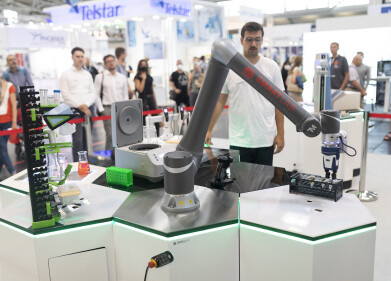News & Views
New Style Optical Traps bring Step-Change to Future Research
Jan 15 2018
Researchers at Dundee University have come up with a new way of creating optical traps – tightly focused laser beams that can confine and manipulate microscopic objects such as cells, bacteria and strands of DNA - using holographic beam-shaping to deploy such traps for the first time through hair-thin optical fibres capable of penetrating safely through living tissues. The ultra narrow optical fibre will enable researchers to access hidden cavities or introduce traps deep inside living organisms without causing any major damage even to the most sensitive tissues.
The new class of multimode fibres developed by the team, which feature previously unattainable levels of light concentration necessary for stable confinement of micro objects, also enables the positioning of multiple laser traps with nanometre precision.
With a footprint being as small as 35 μm in diameter (about half the thickness of a human hair), the instrument can be used to demonstrate the manipulation of micro-objects within a turbid cavity inaccessible to bulk optics.
A paper* describing the study, which was conducted in collaboration with colleagues from Germany and the Czech Republic, was authored by Dundee scientists Ivo Jorge Oliveira Teixeira Leite, Sergey Nikolayevich Turtaev, Professor Sir Alfred Cuschieri and Professor Tomáš ÄŒižmár.
“Just like the proton packs used by the Ghostbusters, optical traps confine and manipulate objects, only remotely from the complexity of living organisms,” said Professor ÄŒižmár. “To the best of our knowledge, this work is the first demonstration of three-dimensional confinement and manipulation of micro-objects by light via an optical fibre, which opens the door to exciting exploitations of optical traps in-vivo.
“This represent a step-change for future research because the primary application of optical traps is the study of intracellular machineries, which are overactive in cancer, and for which a new generation of anti-cancer drugs are being developed. Now we can study these processes in the environment of complex living tissue and organisms rather than artificial conditions.”
Professor Cuschieri added, “While there are no immediate implications for health practice so far, there is significant potential for better understanding of mechanical actions of biological molecules. Thanks to optical tweezers, we now have a much better idea about functions of muscles at molecular level as well as genetic processes and their disruptions.
”Now we have the chance to access real depths of living organisms and, without affecting the processes of life, perform elaborate studies of mechano-chemistry at the single molecule level, all in its natural environment.”
For details and videos of the traps at work visit www.dundee.ac.uk
*Published in Nature Photonics
Digital Edition
Lab Asia 31.2 April 2024
April 2024
In This Edition Chromatography Articles - Approaches to troubleshooting an SPE method for the analysis of oligonucleotides (pt i) - High-precision liquid flow processes demand full fluidic c...
View all digital editions
Events
Apr 28 2024 Montreal, Quebec, Canada
May 05 2024 Seville, Spain
InformEx Zone at CPhl North America
May 07 2024 Pennsylvania, PA, USA
May 14 2024 Oklahoma City, OK, USA
May 15 2024 Birmingham, UK


















